The Ecstasy of St.
Teresa of Avila by Bernini, Santa Maria della Vittoria, Rome
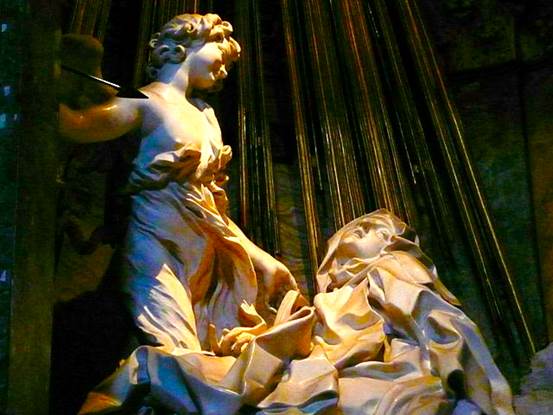
Part III
Bhagavad Gita XVIII.55 / Reaching Union in Love
By Loving Me (the One) is born
The Reality of who I am, how great,
Then having Known Me in Truth
One enters into Me immediately, at once!
Bhaktya mam abhijanati
Yavan yashcasmi tattvatah
Tato mam tattvato jñatva
Vishate tadanantaram
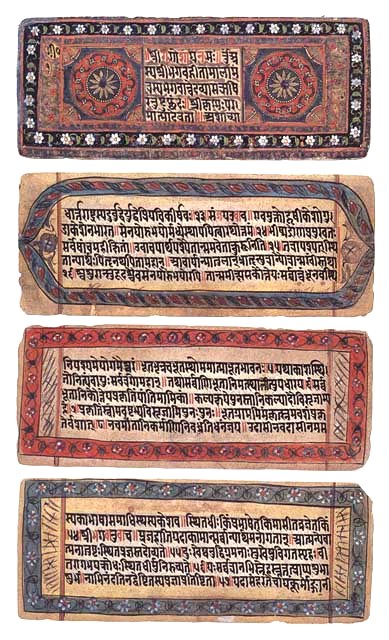
Chapter XII in the Bhagavad Gita reveals Krishna's teaching to Arjuna on Bhakti
Yoga, the Path of Devotion. Verse 7 is my favourite, and I frequently sing it to
myself. The Sanskrit words
mayyaveshitacetasam
have long ago been written in my Heart.
BhG.XII.7
I soon lift up, extricate and deliver
from the ocean of death and birth [Samsara]
Those whose consciousness, whose thoughts
Have entered into Me [the One].
tesham aham samuddharta
mrityusamsarasagarat
bhavami nacirat partha
mayyaveshitacetasam
My understanding and translation is ‘whose consciousness has entered into Me’
[the Oneness]. The Sanskrit breaks down into
mayi
- in me,
aveshita
– entered, abiding in,
c[h]etasam
– of thoughts, in thoughts. Perhaps it is more accurate to describe
God-Consciousness as expanding within us, gently absorbing, overwhelming,
replacing other thoughts as our Real being Returns within us, and we Become that
which we always are.
My translation: For the ones whose consciousness has merged into absorption
(avesha)
in God-Consciousness, I soon will be their deliverer from Samsara, the ocean of
birth and death. Merge all thoughts in Me alone, cause the discerning intellect
to enter in Me. You shall abide [Home] thereafter in Me. There is no doubt of
this!
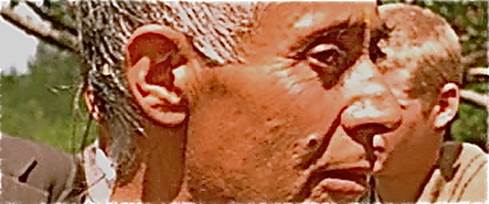
Swami Lakshmanjoo
Swami Lakshmanjoo explains this verse XII.7 thus, “Surrender your mind in Me,
surrender your intellect in Me, [then] you will reside in Me and you will be
considered situated in
uttama
yoga, supreme yoga [union].”
Quoting a passage from Abhinavagupta’s Devistotra, Swami Lakshmanjoo describes
the state of Samadhi of one who is in union with God as the Beloved: When there
is no agitation and the mind is controlled, “and one is focused in concentrating
upon Your universal nature…he [she] observes that he is shivering, trembling, he
has got tears dripping down from his eyes…and he is trembling, he is weeping, he
is crying, he s laughing, laughing loudly, and at the same time he is crying
loudly, and weeping and crying. …he does not know in which way [he is]
existing…am I really weeping or laughing?”
Tears flow easily when we feel near to the presence of the One. You cannot help
this, it is natural to all, and is perhaps the symptom of the breakdown we seek.
We are at last surrendered. The small frail, often silly ego with all its puffy
pride and endless dead-end desires, has prostrated itself to the Real within,
our own eternal Being. Tears are the expression of both Joy and relief! Thank
God, we are Home!
Swami Muni Narayana Prasad says that for all individuals life ends in death, but
when we see life though the eyes of the Creator, we understand that Life is the
endless creativity of the One “finding self-expression”. For the Creator, life
is like a painter’s canvas, blank and white, then filled with colour and form,
then blank again, awaiting more. Through the ‘eyes’ of the One, Life continues
uninterrupted and “unaffected by the vagaries of the apparent forms emerging and
merging back” into the one Reality.
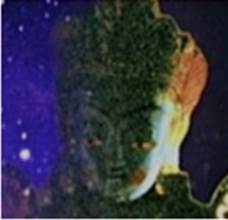
Love is the greatest element in the body of the One
God is Love. When our consciousness merges with the God-within, when
mayyaveshitacetasam, our
consciousness has entered into the Oneness, then we are liberated from the
sorrows of death and rebirth, samsara. This moment of Union is the Real Bhakti
Yoga. After such an experience, we begin to live every day in the
Wisdom-Knowledge that everything is sacred, the ubiquitous Oneness is everywhere
within everyone.
As Swami Lakshmanjoo says, “Love is the greatest element which is created in the
body of Parabhairava" [the Kashmir Shaivite term for the One]. Our return Home
into the One within All “can be achieved. That is not impossible for anybody to
achieve. Everybody can achieve Him, but with what, with what element, with what
weapon?” How do we reach Home?
“Bhakti, devotion. If he undergoes intense devotion towards Parabhairava, he
will reach…” Thus we realize and understand from Swami Lakshmanjoo that, even
though Kashmir Shaivism is a mental discipline and knowledge is emphasized,
devotion is said to be more important than wisdom knowledge [jñana], or anything
else. “Devotion, yes,” he says. “nothing is…jñana is nothing before devotion.
…that state of Parabhairava can be achieved by anybody, any disgusted being, by
bhakti, by devotion, by love.”
What is love? In his comments on the Bhagavad Gita VIII.20-22, Swami Lakshmanjoo
describes love: “Love is just one-pointed, love is always love, love cannot
remain without love. Love is. ...in waking state there is love, in sleeping
state there is love. He can weep, at any moment he can weep, tears are always in
his eyes, tears are always there when he is laughing in a dream, tears are
always in him. He is filled with tears, everywhere. …Oh, love is just blind!
“And he does not know what love is. He himself does not know what is love. Love
is the greatest element which is created in the body of Parabhairava.”
This is Truth, as we all come to know — God is Love.
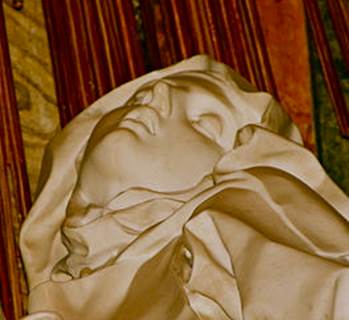
Words that Open Truth
In the Fullness of your God-Self — Be.
That One moving within, ever expanding,
Purifies, opening the portals to Wisdom.
These words serve to open Truth,
Your Heart beats in Union with Mine,
Your hand moves across the page,
There is no room for pain,
Only the gentle pulsation,
The ebb and flow of our Love,
Thick with the Light of Fire,
Spreading out in threads,
Flooding every cell, the Return,
The rapture of Fire, the Real,
Streaming radiance, pouring out.
Beloved, My Love for you is eternal,
My Love transforms, drawing you into Me,
Over the winds of Time,
Into the Heart of the Stars.
Listen for the silent music within,
Sweet melodies dance across our Touch.
Hold me in your Heart.
The Truth lies within our embrace.
by V. Susan Ferguson

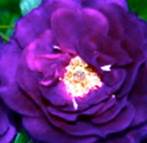
Bhagavad Gita, In the Light of Kashmir Shaivism, with original video, Revealed
by Swami Lakshmanjoo, Edited by John Hughes, Co-editors Viresh Hughes and Denise
Hughes; Universal Shaiva Fellowship, 2013.
The Gita for Modern Man, by Krishna Chaitanya; Clarion Books, Associated with
Hind Pocket Books, New Delhi, 1986, 1992.
KRISHNA CHAITANYA, A Profile and Selected Papers; Edited by Suguna Ramachandra;
Konark Publishers Pvt. Ltd., Delhi, 1991.
Life’s Pilgrimage Through The Gita, by Swami Muni Narayana Prasad; D.K.
Printworld, New Delhi, 2005, 2008.
The Bhagavad Gita in the Mahabharata, A Bilingual Edition, translated by J.A.B.
van Buitenen; The University of Chicago Press, 1981.
The Bhagavad Gita, translated by Winthrop Sargeant; State University of New York
Press, 1994.
Abhinavagupta’s Commentary on the Bhagavad Gita, Gitartha Samgraha, translated
by Boris Marjanovic; Indica Books, Varanasi, 2002, 2004.
The Betrayal of Krishna, Vicissitudes of a Great Myth, by
Krishna Chaitanya/K.K. Nair;
Clarion Books, 1991, New Delhi.
The Mahabharata, A Literary Study, by Krishna Chaitanya [K.K. Nair]; Clarion
Books, Delhi, 1985, 1993.
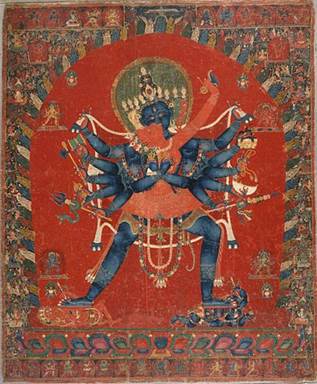
The Buddhist Deities Chakrasamvara and Vajravarahi 15th century.
|
Questions
or comments about articles on this site: |
Copyright© V. Susan Ferguson |
Technical questions or
comments about the site: |
|
|